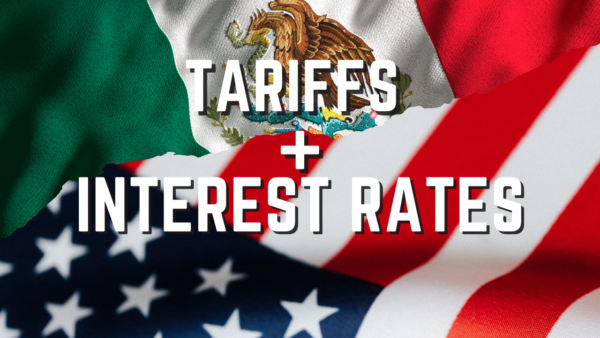One of the themes that emerged in the first half of last year about the Fed Funds Rate was the expectation that inflation and interest rates would persist at higher levels than anticipated. However, the second half of the year brought a sharp decline in inflation and accelerated expectations of interest rate cuts. The inflation data for the first two months of 2024 have reignited the higher for longer narrative, underscoring the need for careful analysis and consideration of these trends.
Last year’s deceleration in inflation always contained an element of “too good to be true.” Unusual and unsustainable deceleration in certain categories, such as airline fares and used car prices, made it so. Airfares fell almost 15% throughout April, May, June, and July but have risen since. Used car prices fell each month by over 6% from June to October but have risen in three of the past four months. Those sorts of developments last year induced a sense of euphoria in the markets, which priced much more in the way of monetary easing than the more cautious guidance being provided by the Federal Reserve’s Open Market Committee (FOMC).
Fed Funds Rate Cuts
The January and February inflation data have poured some cold water on this euphoria. Expectations now are much more tempered. Some additional trimming of expectations is likely to happen this year. After its March 20 meeting, the FOMC released its forecasts for the next three years. It continues to project three cuts in the fed funds rate totaling 75 basis points this year but is now projecting less easing for 2025 and 2026 than in its previous forecasts. Moreover, some subtle changes in individual committee members’ expectations suggest that some committee members are reconsidering how much easing would be wise for 2024.
The bumps in the road regarding inflation are not the only reason for the Fed to tread cautiously. Asset prices, most notably equity and house prices, have enjoyed robust appreciation in the past six months. Consumer spending has grown vigorously in recent quarters, reflecting the increases in household wealth emanating from the housing and equity markets and rapid job growth.
One of the questions the members of the FOMC will have to address is the possibility that the economy’s equilibrium interest rate is higher than it was a few years ago. Is the level of the Fed funds rate consistent with the Fed’s goals of full employment and stable inflation at about 2% higher now than before the pandemic? The FOMC has already given hints that its thinking is evolving. In December 2019 (just before COVID), its longer-term projection for the funds rate stood at 2.5%. The FOMC held this projection in 2020, 2021, 2022, and 2023.
However, in March of this year, it pushed it up to 2.6%. This is a small increase. But under the surface of the median forecast there has been significant evolution in the views of the individual members of the FOMC. The survey taken in March shows that seven FOMC members (out of 18) now believe that the longer-term equilibrium Fed funds rate is 3.0% or higher. In December 2022, only 2 FOMC members believed this.
AI and the Fed Funds Rate
There are several reasons why FOMC members might be changing their minds about the appropriate equilibrium Fed funds rate. One is that they are starting to buy into the possibility that artificial intelligence and other technological advances will usher in an era of higher investment and productivity growth.
The behavior of financial markets in the past two years may reinforce such beliefs. Another is the possibility that there are some lasting effects from COVID-19 on the economy and on fiscal policy that will work to boost growth. Both of these considerations would argue for a higher equilibrium Fed funds rate. FOMC members may also be increasingly moving away from assessments of risks that were formed during low inflation, financial fragility, and weak growth associated with the Great Recession and its aftermath.
Fed Funds Rate Long-Term Vision
The longer-term questions about where the Fed funds rate should settle may not strongly impact monetary policy this year. However, they become significant when the Federal Reserve starts planning for 2025 and 2026. Even a few months of unexpectedly high inflation, as we have seen in the first two months of this year, can shape the appropriate policy in the medium term. It is not surprising to see the FOMC forecasts for 2025, 2026, and beyond adjust to a higher trajectory. This underscores the importance of staying updated on these trends and their potential impact on future policy decisions.





